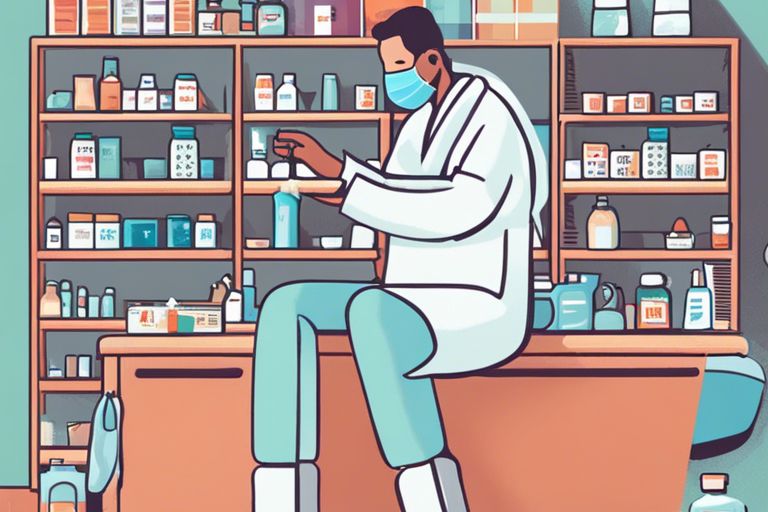You may be wondering how to maintain your dental health during these unprecedented times of Covid-19. With dental offices operating at limited capacity and experiencing delays, it is necessary to take proactive steps to care for your oral health at home. This blog post will provide you with expert tips and guidance on how to keep your teeth and gums healthy, handle common dental issues that may arise, and navigate through any treatment delays you may encounter. By following these recommendations, you can ensure that your smile remains bright and healthy despite the challenges posed by the pandemic.
At-home Dental Care Best Practices
A healthy dental routine is crucial, especially during times when access to professional dental care may be limited. By following some best practices at home, you can maintain good oral health and prevent common dental issues.
Daily Oral Hygiene Routines
Athome, make sure to brush your teeth at least twice a day with a fluoride toothpaste and a soft-bristled toothbrush. Flossing daily is also important to remove plaque and food particles between your teeth. Additionally, using an antiseptic mouthwash can help kill bacteria that cause bad breath and gum disease.
Don’t forget to clean your tongue as well, as bacteria can accumulate on its surface and contribute to bad breath. Lastly, stay hydrated by drinking water throughout the day to keep your mouth moist and wash away food debris.
DIY Solutions and Alternatives for Dental Products
One way to maintain your dental health at home is by using DIY solutions and alternatives for dental products. For example, you can create your own natural toothpaste using baking soda and coconut oil. You can also make a homemade mouthwash with hydrogen peroxide and water to help kill bacteria in your mouth.
Another alternative is using interdental brushes or water flossers if traditional floss is not available. These tools can help clean between your teeth effectively and prevent plaque buildup. It’s important to consult with your dentist or dental hygienist before trying any DIY solutions to ensure they are safe and effective for your oral health.
Any alternative dental products or solutions should complement, not replace, your regular oral hygiene routine. While these DIY options can be helpful during times of limited access to professional care, it’s still important to seek regular check-ups and cleanings once your dental clinic reopens.
Managing Dental Emergencies at Home
Little has COVID-19 impacted our lives in ways we never anticipated. From changing how we work to altering our daily routines, the pandemic has left no aspect untouched, including our dental health. According to a study by Verywell Health, the pandemic has significantly impacted oral hygiene practices worldwide. If COVID changed your oral hygiene, you’re not alone.
Identifying Dental Emergencies
An important aspect of managing dental emergencies at home is being able to identify when a situation requires immediate attention. Common dental emergencies include severe tooth pain, swelling of the gums or face, broken or lost teeth, and signs of infection such as pus around a tooth.
In some cases, a dental emergency may be accompanied by symptoms like bleeding that won’t stop, intense pain that over-the-counter pain relievers can’t alleviate, or trauma to the mouth and jaw. If you experience any of these signs, it’s crucial to seek professional dental care as soon as possible.
First Aid for Dental Issues
To address dental emergencies at home, it’s important to have a basic understanding of first aid for dental issues. This includes knowing how to clean and protect a knocked-out tooth, manage severe toothaches with over-the-counter pain relievers and cold compresses, and temporarily address lost fillings or crowns with dental cement.
Dental emergencies can be unsettling, but remaining calm and taking swift action can help alleviate discomfort and prevent further complications. While home remedies can provide temporary relief, it’s important to follow up with a dentist for a thorough evaluation and proper treatment to address the root cause of the issue.
Dental health is an integral part of overall well-being, and knowing how to manage dental emergencies at home can make a difference in preserving oral health during challenging times like the COVID-19 pandemic. By staying informed and prepared, you can take proactive measures to protect your teeth and gums until you can access professional dental care.
Navigating Dental Care Delays
All over the world, the global pandemic has disrupted daily routines, including regular dental visits. Many people have experienced delays in their dental care due to Covid-19 restrictions and office closures. During these uncertain times, it is imperative to know how to navigate these delays effectively while maintaining good dental health at home.
Communication with Dental Professionals
The key to managing dental care delays is open and transparent communication with your dental professionals. If you have an existing dental issue or treatment plan that has been postponed, reach out to your dentist or hygienist. They can provide guidance on interim care and offer advice on managing potential problems until you can resume your regular dental visits. Additionally, staying in touch with your dental office will help you stay informed about any changes in their scheduling or protocols.
Utilize telehealth options to discuss any concerns with your dental provider virtually. They can assess your situation remotely and provide recommendations for at-home care or determine if an in-person visit is necessary. Keeping the lines of communication open will ensure that you receive the guidance you need to maintain optimal oral health during these challenging times.
Planning and Prioritizing Dental Visits Post-COVID-19
One of the most important aspects of navigating dental care delays is planning and prioritizing your dental visits post-COVID-19. Once dental offices resume full services, there may be a backlog of appointments, so it is crucial to schedule your visits strategically. Assess your dental needs and prioritize urgent or imperative treatments to address any pressing issues first.
Prioritizing treatments based on urgency can help you make the most of your dental visits and ensure that critical issues are addressed promptly. Discuss your treatment plan with your dentist to create a timeline that aligns with your priorities and overall oral health goals. By planning ahead and prioritizing your dental visits, you can efficiently manage any delays and maintain a healthy smile.
Embracing Tele-dentistry
Once again, the COVID-19 pandemic has challenged the way we approach healthcare, including dental services. With social distancing measures in place and restrictions on non-crucial healthcare visits, tele-dentistry has emerged as a valuable tool for maintaining dental health and seeking professional advice remotely. Embracing tele-dentistry can help individuals stay connected with their dental providers and address oral health concerns without needing to physically visit a dental clinic.
Understanding Tele-dentistry and How to Access It
One of the key aspects of tele-dentistry is the ability to consult with a dentist virtually, using video calls or phone conversations. This allows patients to discuss their symptoms, receive guidance on home care practices, and even get prescriptions if needed. To access tele-dentistry services, individuals can reach out to their dental clinics to inquire about virtual consultation options. Many dental practices have adopted tele-dentistry platforms to provide ongoing support to their patients during these challenging times.
Benefits of Tele-dentistry During and After the Pandemic
An efficient and convenient way to receive dental care, tele-dentistry offers several benefits during and after the pandemic. Patients can access professional advice from the comfort of their homes, reducing the risk of exposure to the virus. Additionally, tele-dentistry can help individuals save time and money that would have been spent on travel and in-person visits. This approach also promotes regular communication between patients and their dentists, leading to better oral health management in the long run.
Pandemic-related disruptions may have caused delays in routine dental check-ups and treatments, making tele-dentistry a valuable resource for addressing urgent dental issues and seeking guidance on oral health maintenance. By leveraging tele-dentistry services, individuals can take proactive steps towards caring for their oral health and staying connected with their dental care providers, ensuring continuity of care even during challenging times.
Final Words
From the above discussion, it is evident that maintaining good dental health during the Covid-19 pandemic is crucial. By following the at-home care tips provided and understanding how to handle delays in dental treatment, individuals can ensure that their oral health remains a priority even during these challenging times. Note, regular brushing, flossing, and a healthy diet are important for preventing dental issues. If you experience any urgent dental problems, do not hesitate to seek professional help from your dentist. Stay informed, stay proactive, and take control of your dental health even amidst the uncertainties brought on by Covid-19.






